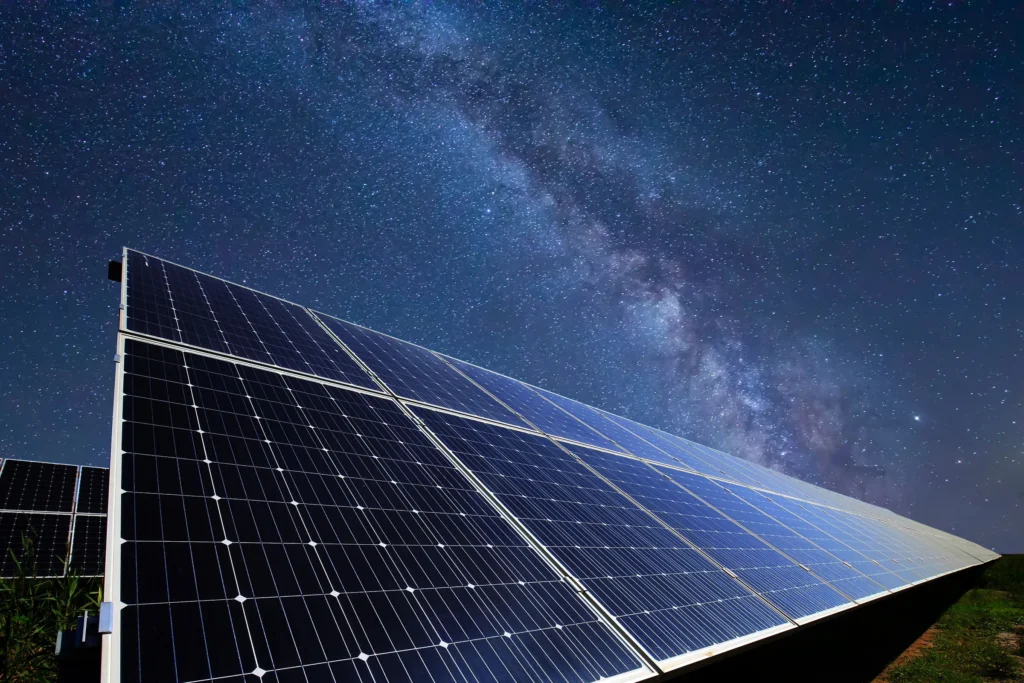Energy is the backbone of any modern society, powering everything from homes to industries. With growing energy demands and increasing awareness of the environmental impacts of traditional energy generation, the push for sustainable, innovative solutions has never been more urgent. While solar technology has made significant strides over the years, new ideas and breakthrough technologies are reshaping how we think about energy production.
Solar’s Limitations and the Quest for Nighttime Energy
Solar panels have been a cornerstone of renewable energy for decades, converting sunlight into electricity. While effective during daylight hours, solar technology has two major drawbacks:
- Dependence on Sunlight: Cloudy days, long winters, or areas with limited sunlight struggle to generate sufficient energy.
- Nighttime Energy Gaps: Solar panels stop producing electricity after sunset, leaving users reliant on stored energy or alternative sources.
Addressing these issues, researchers at UC Davis are pioneering a groundbreaking “anti-solar panel” that generates electricity even at night.
The “Anti-Solar Panel” Concept
The new technology, led by Jeremy Munday, a professor in UC Davis’ Department of Electrical and Computer Engineering, utilizes thermoradiative photovoltaics. This innovative approach capitalizes on heat radiating from the Earth and the cooling properties of the night sky to produce electricity after sunset.
Here’s how it works:
- A regular solar cell absorbs sunlight and generates power by creating a voltage across the device.
- In contrast, these nighttime photovoltaic cells emit light and produce power as the current and voltage flow in the opposite direction.
- By pointing the device at the sky, it uses the Earth as a heat source and the sky as a heat sink to create electricity, even in the absence of sunlight.
While early estimates suggest this technology may generate up to 50 watts at night—about 25% of what a typical solar panel produces during the day—it represents a significant step forward in bridging solar energy gaps.
Beyond Solar: Exploring Breakthrough Energy Technologies
While technologies like the nighttime photovoltaic cell push the boundaries of renewable energy, a growing community of inventors and researchers is exploring even more radical solutions. These “breakthrough” energy technologies promise to deliver clean, unlimited power and could fundamentally disrupt the global energy economy.
Real Innovations Amid Skepticism
Many people are skeptical of breakthrough energy technologies, often dismissing them as hoaxes or overly ambitious concepts. However, as former NASA astronaut and Princeton physicist Dr. Brian O’Leary once noted:
“If the new energy technologies were to be set free worldwide, the change would be profound. These technologies are absolutely the most important thing that’s happened in the history of the world.”
Some of these technologies are real and have been demonstrated to work. For example:
- A Toronto-Based Device: During a private demonstration, a device was shown to produce multiple kilowatts of power without relying on traditional energy inputs. Though specific details remain confidential due to non-disclosure agreements, attendees—including engineers and investors—verified its functionality.
- Radio Frequency Power Generation: An inventor in Zimbabwe developed a system that harnesses ambient radio frequencies to generate electricity. This remarkable concept is another example of unconventional yet functional energy solutions.
The Struggle to Bring New Energy Technologies to Market
Despite their potential, only a small percentage of these breakthrough technologies are ever brought to public attention or commercial viability. According to Susan Manewich, a researcher and advocate in the field of new energy:
“Perhaps only 5% of the devices and claims we evaluate are real and viable. But even that small percentage represents revolutionary potential.”
Manewich and her team have traveled the globe to vet technologies, support inventors, and explore pathways to mass adoption. However, many of these innovations face significant obstacles, including:
- Lack of Awareness: Limited public knowledge about these technologies often stifles investment and support.
- Institutional Resistance: Established energy companies and regulatory bodies may be incentivized to suppress disruptive technologies to protect existing markets.
- Economic and Political Barriers: The dominance of profit-driven systems often prioritizes short-term gains over long-term sustainability.
Rethinking Energy and Society
The potential of breakthrough energy technologies extends far beyond clean electricity. If widely adopted, they could transform society by:
- Eliminating Energy Scarcity: Universal access to affordable, renewable power could empower communities worldwide.
- Reducing Environmental Impact: Clean energy solutions would help combat climate change and preserve ecosystems.
- Encouraging Global Collaboration: Sharing and developing these technologies could foster greater unity and cooperation among nations.
However, the transition to a more harmonious and sustainable energy future may require more than just technological innovation. It calls for a shift in humanity’s worldview—one that prioritizes collaboration over competition and shared well-being over individual gain.
The Takeaway
Imagine a world where energy is abundant, clean, and accessible to all. This vision is no longer a distant dream but a tangible possibility, thanks to advancements in solar, thermoradiative, and other breakthrough technologies. However, realizing this vision will require overcoming societal, economic, and political barriers that currently hold these solutions back.
The question remains: Are we ready to embrace the transformative potential of these technologies and the cultural shift they demand? The answer lies not just in scientific progress but in humanity’s willingness to rethink its values and priorities. The solutions are already within reach—what’s needed now is the courage to bring them to light.



If individuals could road test these new technologies in their backyards, word of mouth would help spread these ideas.
In Australia we are open to green tech.
Approaching builders, and architects at the planning stage of new housing estates being built would help get leverage. Then adoption would be people driven.